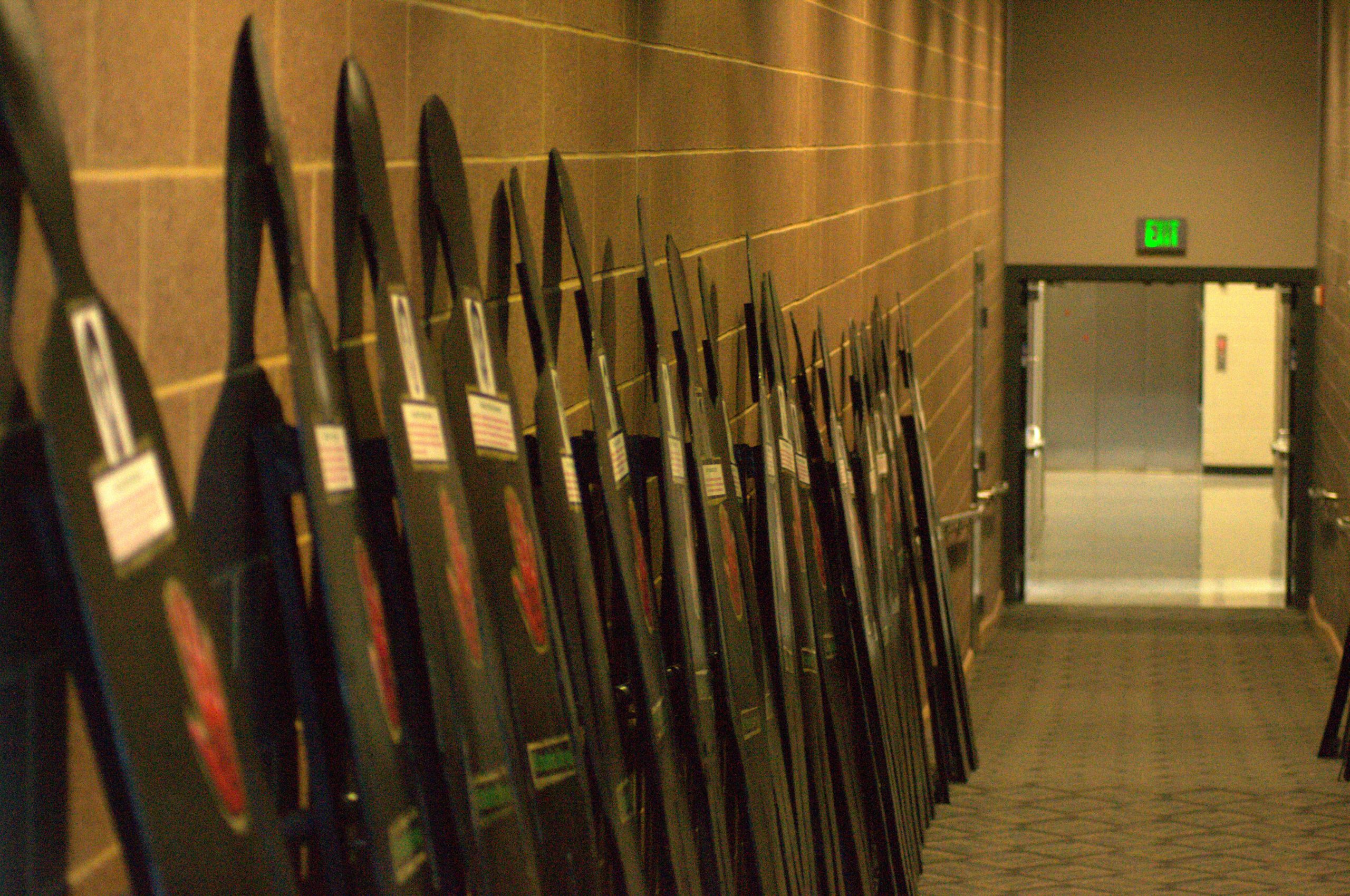
The 43 silhouette art pieces are lined up waiting for the ceremony to start. Remembering the 43 disappeared can help students at DSU learn the importance of activism. Photo by Isabella Perrello.
Dixie State University honors the lives of 43 students who disappeared during a political demonstration in 2014.
On Sept. 26, 2014 in Iguala, Mexico, 43 students took part in a political demonstration which left three dead and the rest missing.
The art instillation, being hosted by the College of Humanities and Social Sciences, will consist of 43 life-sized silhouettes with a biography of each missing student on it. These silhouettes will be placed around campus for all to view starting Sept. 17 through Oct. 1.
The art installation gives students the opportunity to reflect on what happened to the missing students and shows how something in another country can affect us here in the United States.
“While some might see the barbarity of this event as distant and far-flung, we know that freedom of speech, the right to protest, and other rights are something that we must be eternally vigil in defending,” Institute of Politics Director Vince Brown said.
Brown said the messages of free speech the art installation shares are similar to those of the DSU students who protested in front of the Utah State Capitol to be heard by the Senate.
The art installation opens up the possibility for discussion about what role the police play in our communities, he said.
“Police brutality and the conversation surrounding law and order should be fresh in all our minds,” Brown said. “I hope this will further that discussion.”
DSU Chief of Police Blair Barfuss said corrupt governments play a role in policing and this art exhibit serves as an example of this.
“When corrupt political leaders gain complete control and compliance of their established police departments, the role of police changes from public service to political enforcement,” Barfuss said.
The art exhibition gives DSU students, faculty, staff and community the opportunity to discuss topics pertaining to freedom of speech and police brutality.
“It shows that ideals such as freedom of speech are fragile rights that can only exist if both the government and its citizens equally support and defend the principle,” said Stephen Lee, dean for the College of Humanities and Social Sciences.
The art installation gives the DSU community an opportunity to be made aware of situations happening abroad and gives people the opportunity to reflect on what can happen in the U.S.
“My hope is that our students will look at these 43 strangers and see themselves,” Lee said. “I also hope they will realize that the terrible social and political problems the installation explores are not problems unique to Mexico.”


